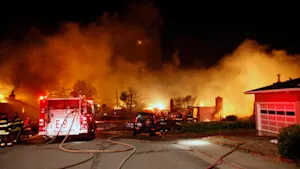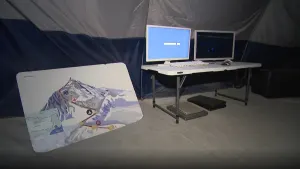More Stories
Last week’s Justice For All report on a police shooting in Bloomfield has led to the discovery of widespread problems with New Jersey’s reporting of police use-of-force cases statewide. The New Jersey Attorney General’s Office confirms the database was corrupted and wrongly displayed the names of thousands of police officers who had not actually used force.
Kane In Your Corner investigated the shooting of Jeffrey Sutton by Bloomfield Police last November. Police claimed they fired after Sutton injured four officers by driving into them with his car. But footage from cell phones and police cameras appeared to show Sutton did not make contact, and all four officers could be seen after the incident, seemingly unhurt.
The two officers who fired at Sutton were Capt. Gary Peters and Officer Raymond Diaz. But Kane In Your Corner found neither appeared In the state’s use-of-force database, which was wrongly displaying the name of a different officer, who had not used force.
The problems went beyond Bloomfield. In thousands of cases statewide, the system was displaying the names of the wrong officers.
Peter Aseltine, a spokesperson for the Office of the Attorney General, says, “there was a glitch in the system that resulted in the system not displaying the officer who used force. Instead, where there were multiple officers listed, the system associated the report with the officer whose name came first alphabetically.”
Aseltine says the errors were fixed after Kane In Your Corner brought it to OAG’s attention and that the wrong names were displayed for less than two weeks.
Karen Thompson with the American Civil Liberties Union is calling on New Jersey to post discipline and use of force reports online directly, rather than filter them through a database.
“We always talk about these proverbial bad apples,” Thompson adds. “Well, how do we get to the bad apples… if we don't see the records in an accurate way?”
Thompson also believes the shooting of Jeffrey Sutton violated use-of-force guidelines. Under Bloomfield’s use of force policy, officers can use deadly force only if they believe it’s immediately necessary “to protect themselves or other officers from imminent danger of death or serious bodily harm.”
But Brian Higgins, a law enforcement analyst with John Jay College and former Bergen County police chief, says while the police narrative may not be accurate, the shooting itself is harder to judge. That’s because under the law, what matters is not if police were actually in danger, but if they thought they were.
“I think I can make an argument for both,” Higgins says, “that the officers may have perceived that this was an act of aggression. The question will be did the individual’s use of the vehicle rise to the level where the officers believe they needed to use deadly force?”
RELATED LINKS:
Text and reporting by Walt Kane.
More from News 12
1:31

What's Cooking: Uncle Giuseppe's Marketplace's prime rib roast
1:30

Looking for a road trip? Check out Big Snow at American Dream in East Rutherford
1:27

What's Cooking: Uncle Giuseppe's quiche lorraine
2:34

Guide: Safety tips to help prevent home burglaries
2:19

Guide: Safety measures to help prevent fires and how to escape one
2:36
